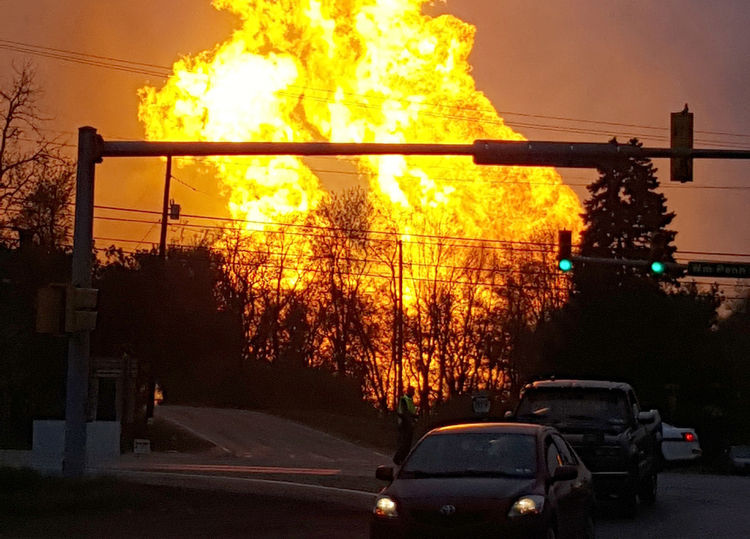It was described in interviews with local NBC affiliate WPXI as similar to an “earthquake,” “jet airplanes crashing,” “a big ball of fire--wide and tall,” and “like the sun was coming.”
On April 29th, 2016, a 30 inch gas pipeline exploded in Westmoreland County, PA. The explosion severely injured one man, destroyed an entire house and damaged several others. It was so large that the portion of pipe that reputed was launched 25 feet into the air and blown 100 feet away.

Photo Credit: Bloomberg
Trees were left charred and a section of road was melted. You can see photos of the damage here
The investigation may take years to determine the direct cause, but one thing is certain, transporting volatile fuels is dangerous.
Pipelines are not only risky because of the volatility. Gas pipelines -- and the fracking to extract gas to feed them -- are polluting drinking water, disrupting habitat, and impacting landowners and communities. And people are organizing to push back against a massive buildout of gas pipelines across the state.
Less than month before this explosion, just a few miles down PA Route 22, landowners, activists, and community members came together for a Sierra Club and Mountain Watershed Association sponsored summit. Two natural gas liquids pipelines called Mariner East 2 and 3 are proposed to cut through their neighborhoods and lands, include a path just 5 minutes north of where Spectra’s Texas Eastern Transmission Pipeline exploded last week.
Several of these attendees are responding to the explosion, by calling the press and organizing local communities.
It can be disheartening to see stories like this pipeline explosion in the news, But know that for each major news story about another fossil fuel disaster there are thousands of untold stories of community resilience fighting for a cleaner, safer, more sustainable future for us all.
Stay hopeful.
Keep Fighting.
